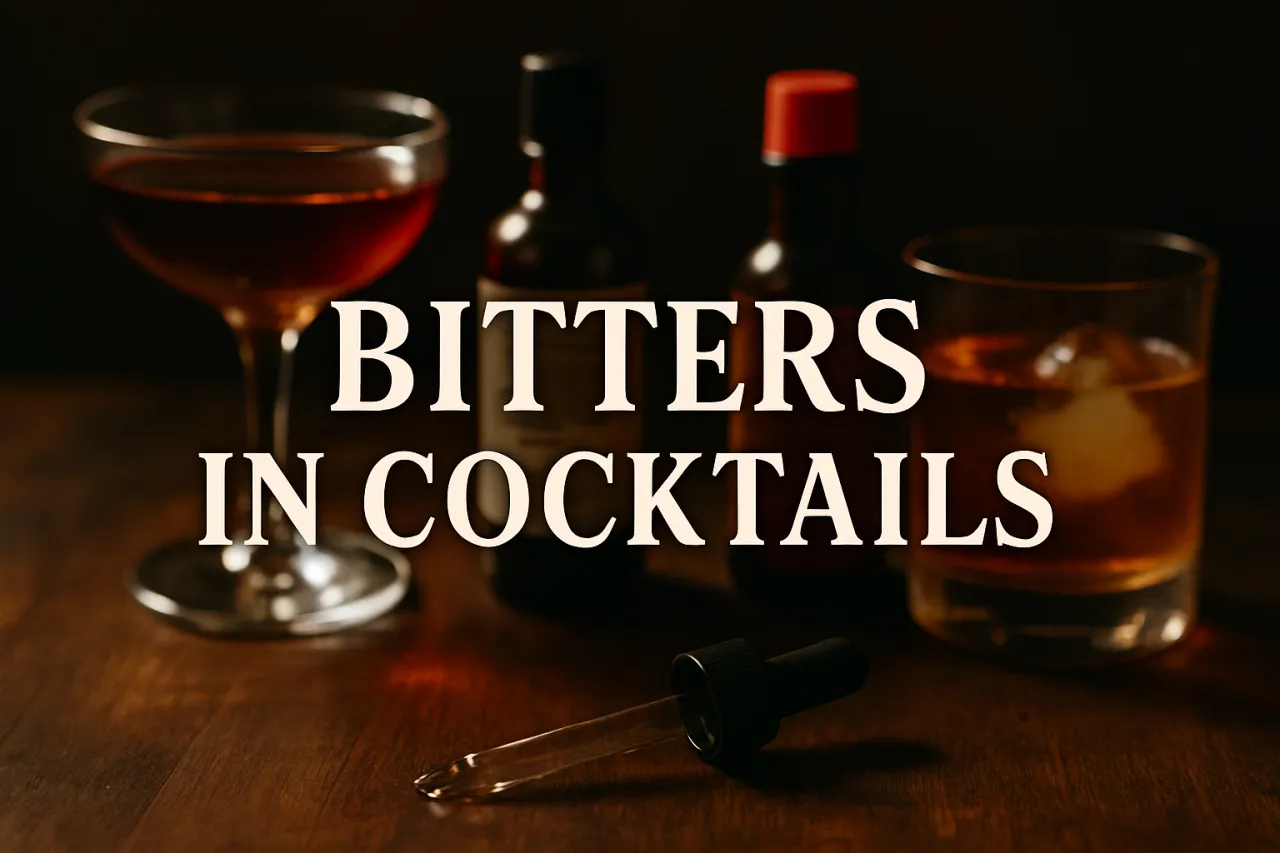Bitters in Cocktails: The Secret Ingredient That Transforms Drinks

By Dave C & Boozeopedia AI Workflow
See how we write our articles
The Role of Bitters in Cocktails
In today’s bars, bitters are like seasoning for drinks. They are strong liquid extracts made from herbs, roots, and spices, used in small amounts to balance and connect flavors. Even though they come in tiny bottles, bitters can shape how a cocktail tastes by tying together sweetness, acidity, and alcohol.
A Short History of Bitters
Bitters started in the 1700s and 1800s as medicine. They were advertised to help with digestion and overall health. Over time, people began using them in alcoholic drinks as cocktails became popular. One of the earliest examples is the Classic Old Fashioned, which was originally defined as spirits, sugar, water, and bitters. By the mid‑1800s, bitters were a standard part of cocktail making.
Famous brands soon appeared. Angostura Bitters were first made in Venezuela, later produced in Trinidad, and became world‑known. In New Orleans, Peychaud’s Bitters became essential for the Sazerac. Orange Bitters added a citrus note that helped shape drinks like the Martini.
How Bitters Are Made
Bitters are made by soaking herbs, spices, and citrus peels in high‑proof alcohol. This pulls out both flavor and aroma. Common ingredients include gentian root, cinchona, wormwood, citrus peel, clove, cardamom, and cinnamon. The result is a concentrated liquid that tastes bitter but also carries strong smells and subtle flavors.
Some well‑known types are:
- Angostura Bitters – spicy with lots of clove and cinnamon.
- Peychaud’s Bitters – lighter, with an anise (licorice) flavor, key to the Sazerac.
- Orange Bitters – made with dried orange peel and spice, often used in the Manhattan.
What Bitters Do in Drinks
Bitters do more than add taste:
- They cut sweetness, like in the Old Fashioned, where Angostura Bitters balance the sugar.
- They add aroma, as in the Manhattan.
- They make drinks feel authentic. The Sazerac is not the same without Peychaud’s Bitters.
Some bartenders spray or dash bitters on top of drinks for aroma without changing the base flavor.
Classic Cocktails with Bitters
- Old Fashioned – whiskey, sugar, water, Angostura Bitters
- Manhattan – rye whiskey, sweet vermouth, Angostura Bitters
- Sazerac – rye whiskey, sugar, absinthe rinse, Peychaud’s Bitters
- Martini variation – gin, dry vermouth, Orange Bitters
New Uses for Bitters
Modern bartenders experiment with new flavors like chocolate, coffee, celery, and lavender bitters. For example, chocolate bitters go well with aged rum, and lavender bitters pair nicely with gin. Bitters are also used in cooking, like in whipped cream or fruit sauces. Seasonal versions, like pumpkin spice or hibiscus bitters, give bartenders more creative options.
Tips for Using Bitters
- Use lightly – even one dash can change the balance of a drink.
- Keep a mix – having aromatic, citrus, and experimental bitters gives you flexibility.
- Try outside cocktails – bitters also work in coffee, tea, or mocktails.
- Mix bitters – like orange and chocolate bitters together in a rum cocktail.
- Add aroma – sprays or drops on top of a drink can boost the smell without changing the flavor too much.
Conclusion
Bitters are small but powerful. They help cocktails taste balanced, smell better, and connect to history. For anyone learning bartending, knowing how to use bitters is key to making drinks that stand out.